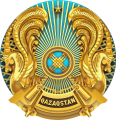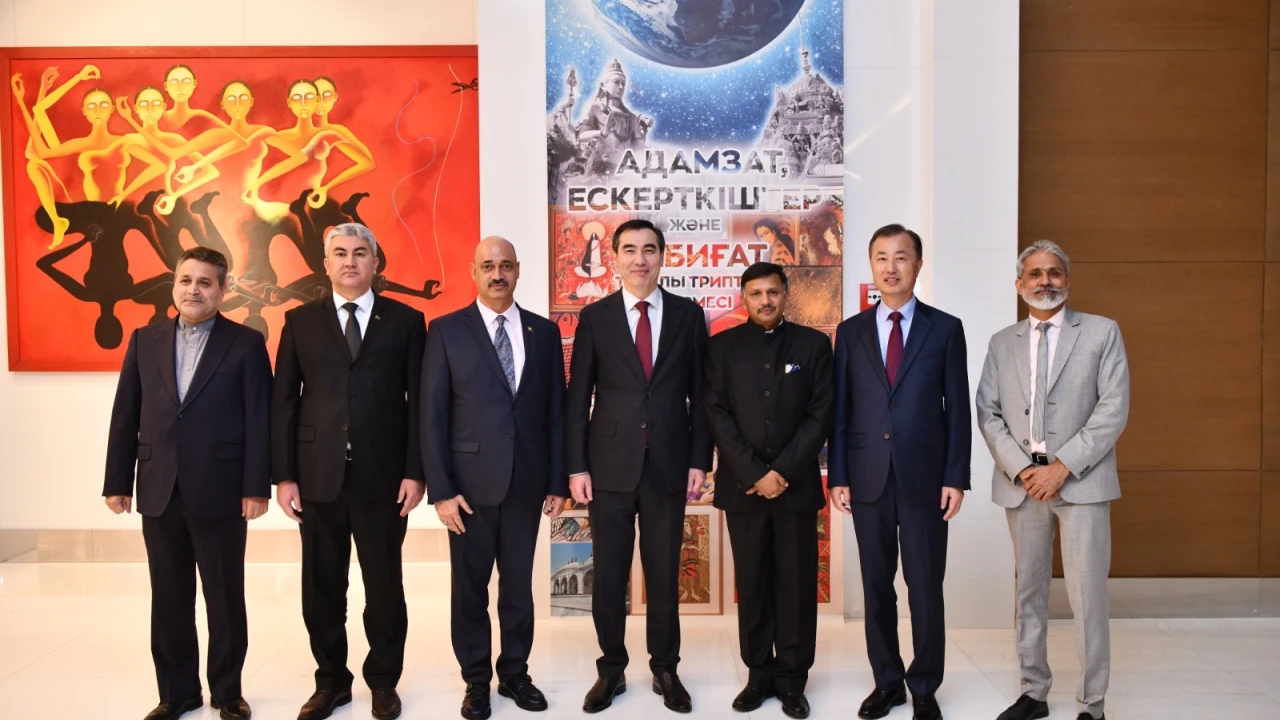
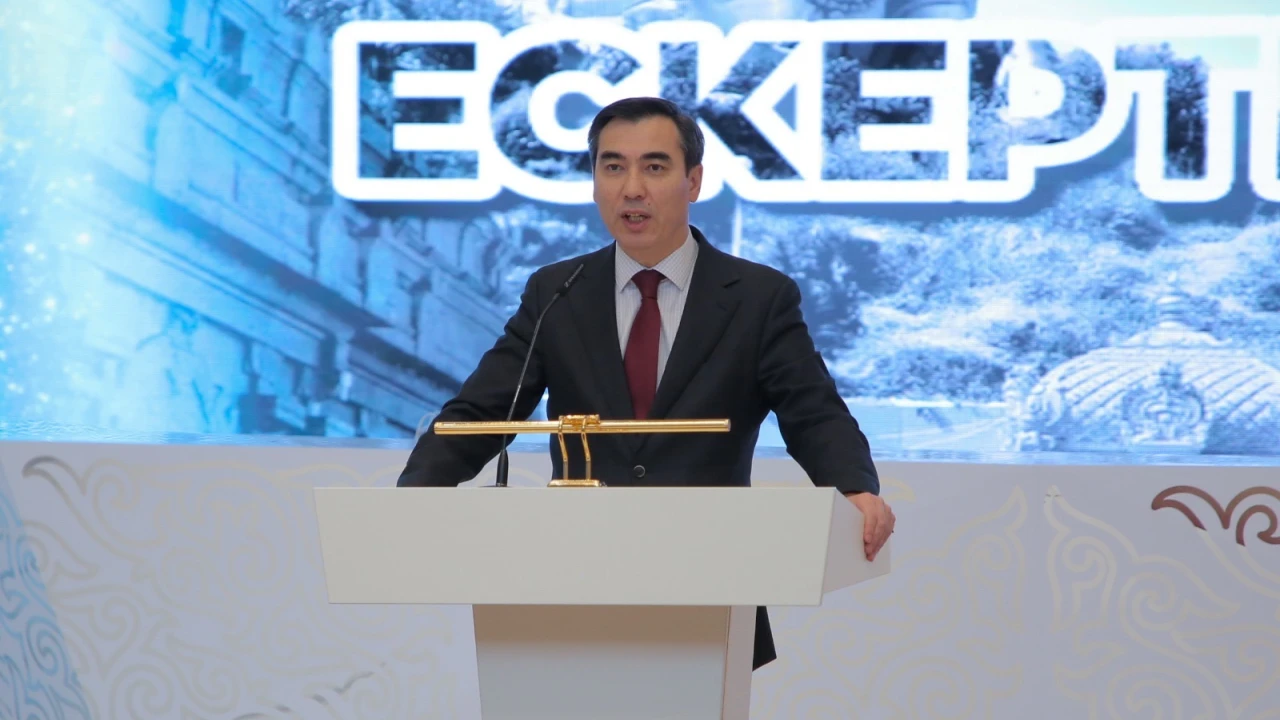
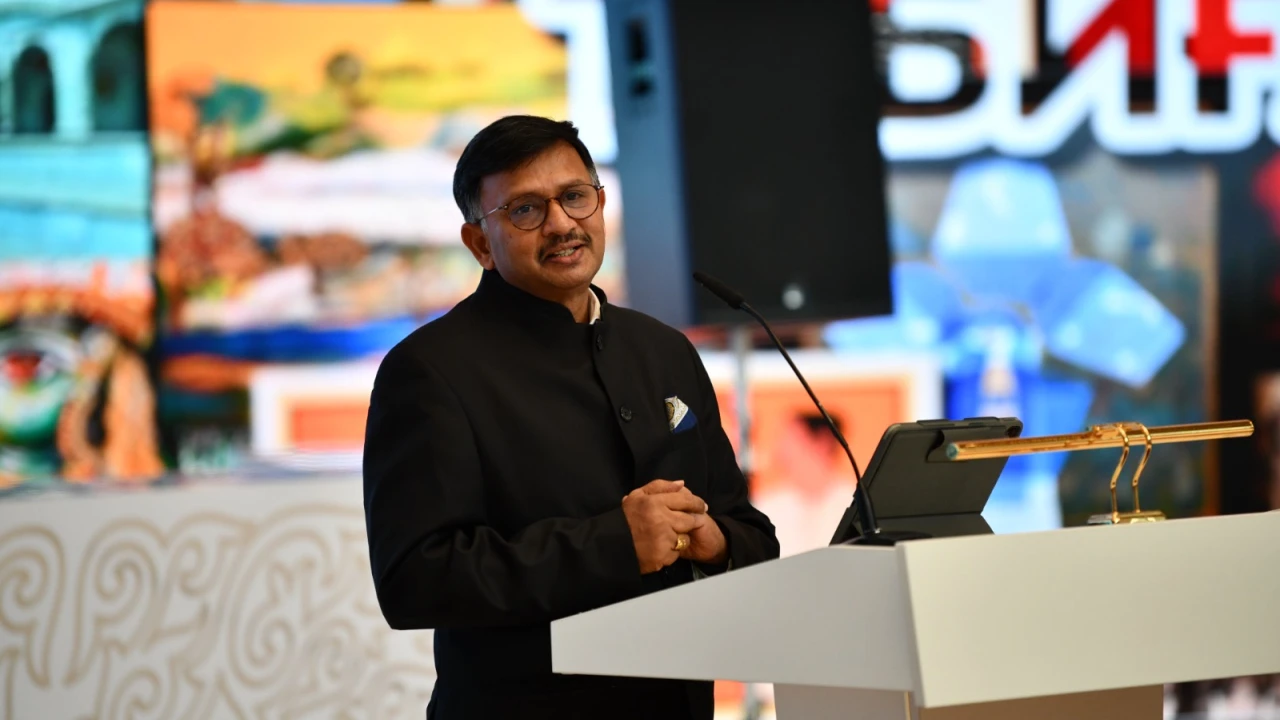
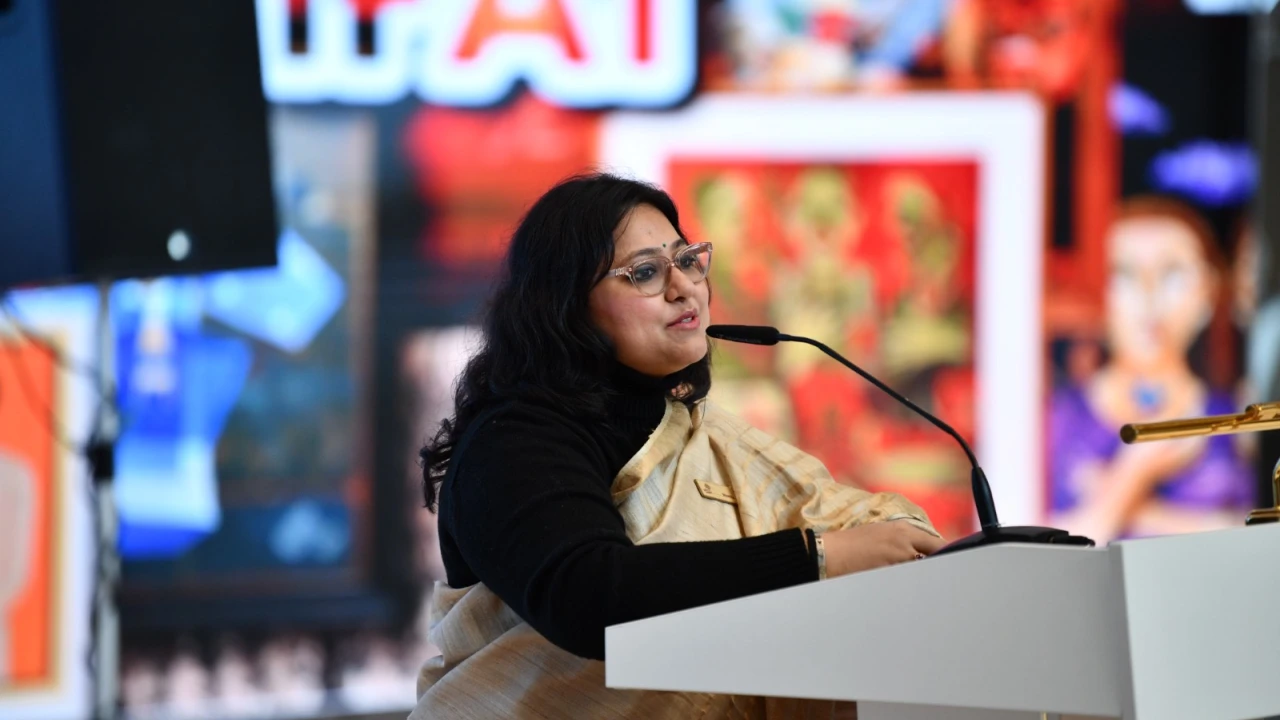
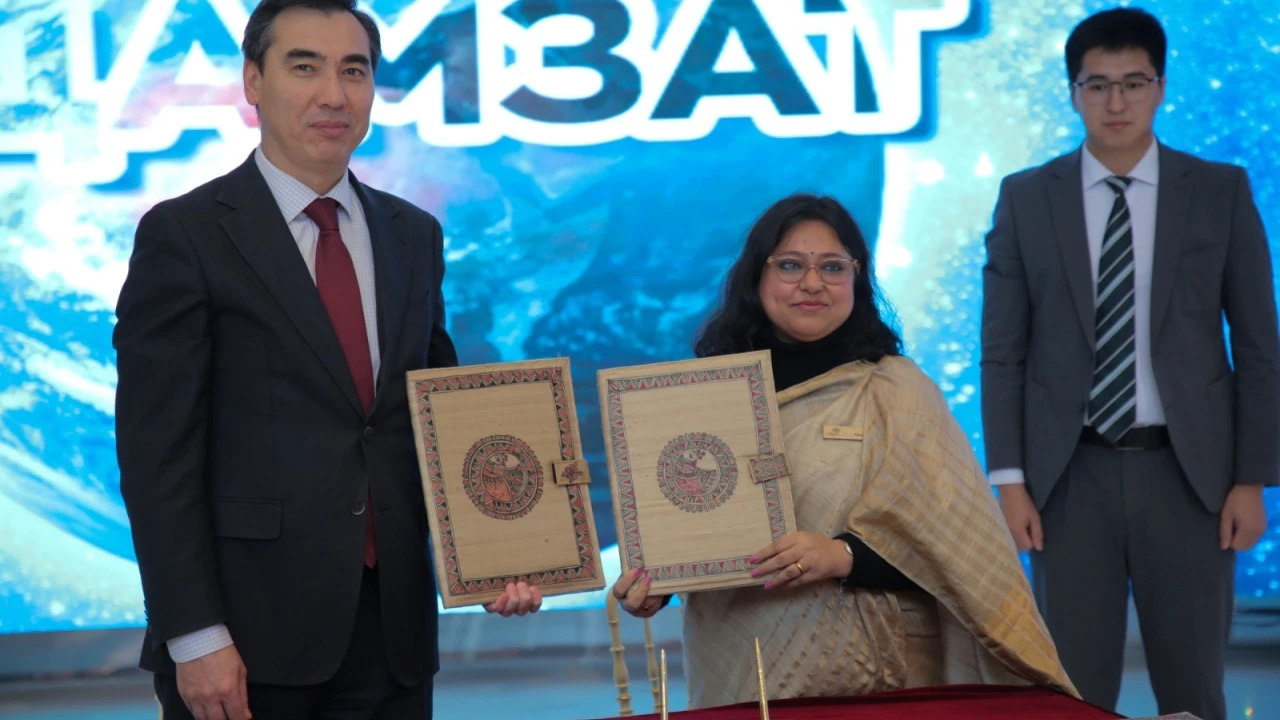
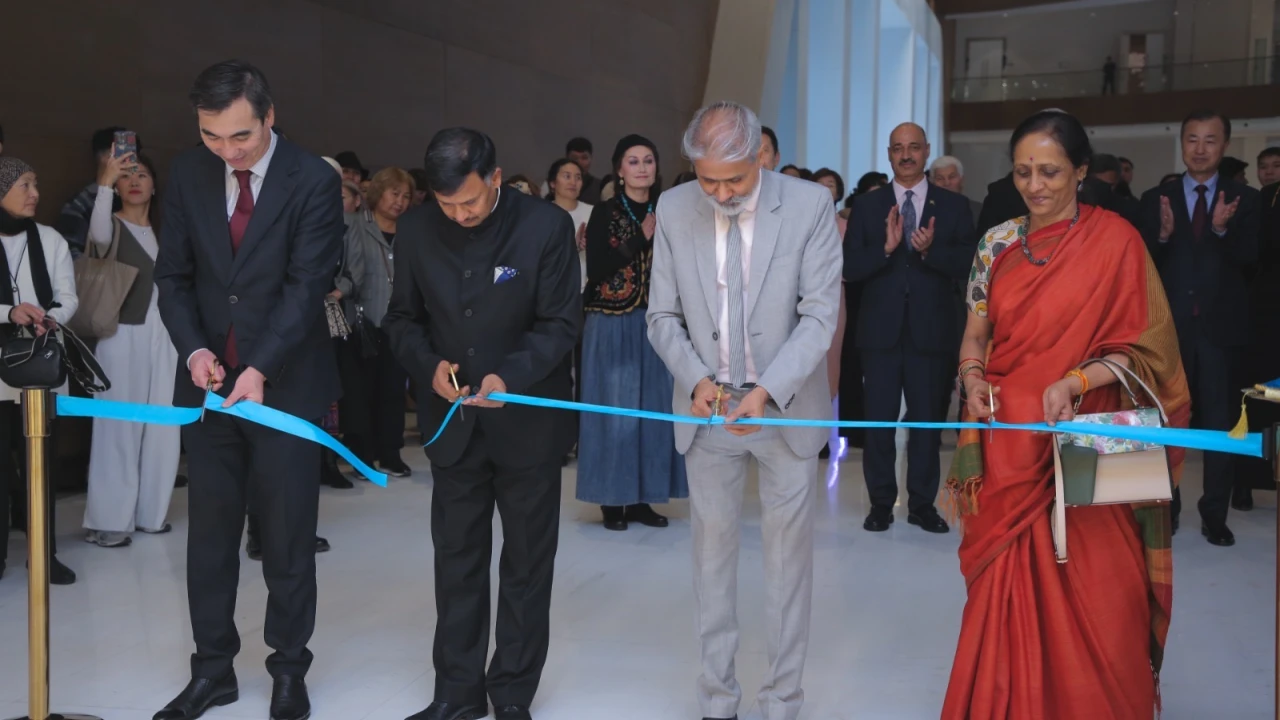

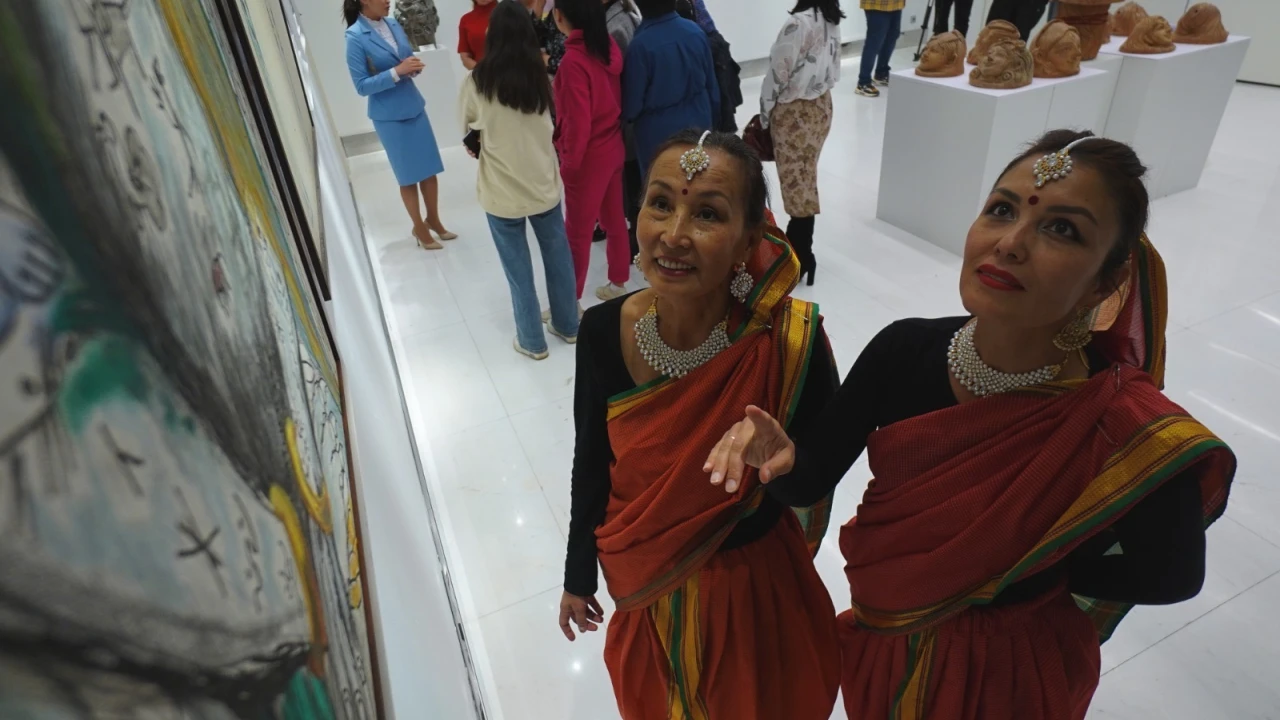
The Presidential Center of the Republic of Kazakhstan hosted the opening of the international exhibition “Triptych on Humanity, Monuments, and Nature” from the collections of the Bihar Museum in Patna (Bihar, India). The exhibition is part of the international project “Dialogue through Culture,” organized by the Presidential Center of Kazakhstan in collaboration with the Swami Vivekananda Cultural Center of the Embassy of India in Kazakhstan.
The Bihar Museum is a significant art and archaeology museum located in the ancient city of Patna, Bihar. It is one of the largest museums in India, showcasing the art, culture, and traditions of the region while highlighting Bihar’s significant contributions to the history and civilization of India. The museum's collections include over 40,000 artefacts, and it actively engages with the academic community, offering resource centres, training programs, internships, and scholarships. The museum's activities focus on fostering collaboration and partnerships to promote culture and the arts.
The exhibition at the Presidential Centre of the Republic of Kazakhstan presents artworks in which artists demonstrate the diversity of forms and the interconnectedness of humanity with nature through expressive portraits, compositions, sculpture and documentary photographs with monumental works from ancient wonders to modern architectural structures that are witnesses of human history.
In his welcoming speech, Bakytzhan Temirbolat, Director of the Presidential Center, noted that this is the second project organized in collaboration with the Swami Vivekananda Cultural Center at the Embassy of India in Kazakhstan.
“Today, we have a unique opportunity to explore artworks from one of the largest museums in India—the Bihar Museum. The artworks, including paintings, sculptures, and photographs, capture the artists' philosophical insights into the relationship between humanity and nature in all its diverse forms. I am confident that the exhibition ‘Triptych on Humanity, Monuments, Nature’ will allow us to join the amazing and mysterious world of the East, looking at it through the prism of traditions and culture of the Indian people,” said Bakytzhan Temirbolat.
“Culture today has become one of the main vectors of cooperation between India and Kazakhstan. The exhibition has 62 exhibits from the works of 39 artists and four photographers. I thank all the professionals who participated in the opening of this current exhibition,” shared Nagendra Prasad, Ambassador Extraordinary and Plenipotentiary of the Republic of India to the Republic of Kazakhstan.
“Today’s exhibition aims to uncover the complex layers that connect people, the structures we build, and the landscapes we inhabit. Each work in the exhibition encourages reflection on our role as both makers and creators in a constantly changing world. Our artists have come together from various social strata, each bringing their unique touch to the works. Through their eyes, we witness the fortitude, monuments' grandeur, and nature's beauty and fragility. Their artworks prompt us to consider our shared history, the influence of time, and the legacy we leave behind,” stated Mrs Moumita Ghosh, curator of the Bihar Museum.
The exhibition showcases approximately 60 worksin various forms and genres of visual art. A Memorandum of Cooperation and Interaction was signed during the event between the Presidential Center of the DPA the Republic of Kazakhstan and the Bihar Museum (Patna, India).

